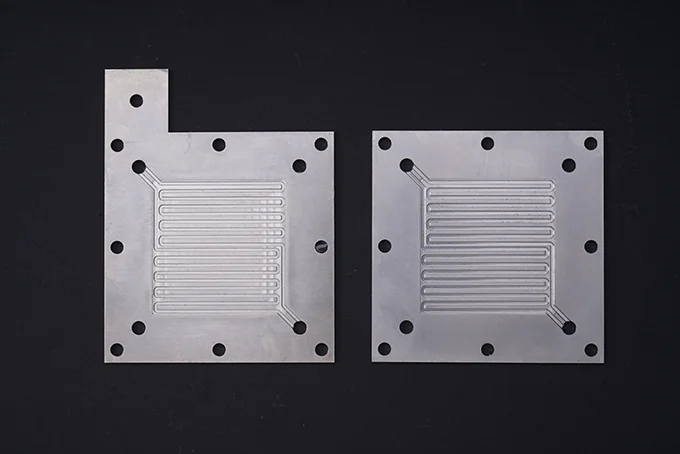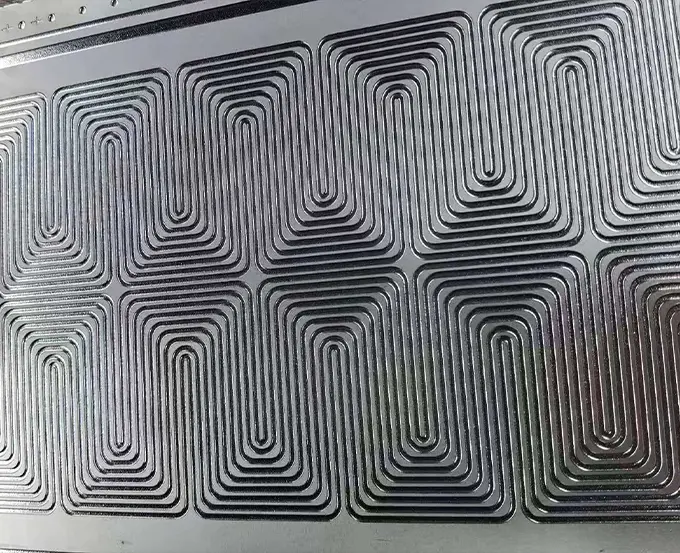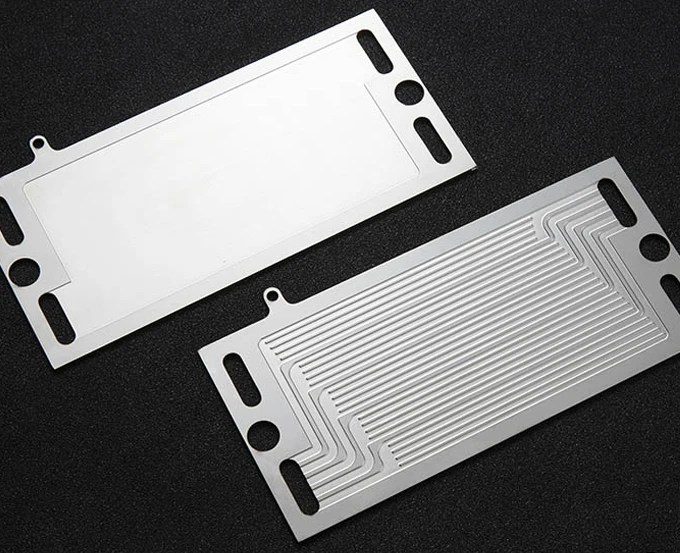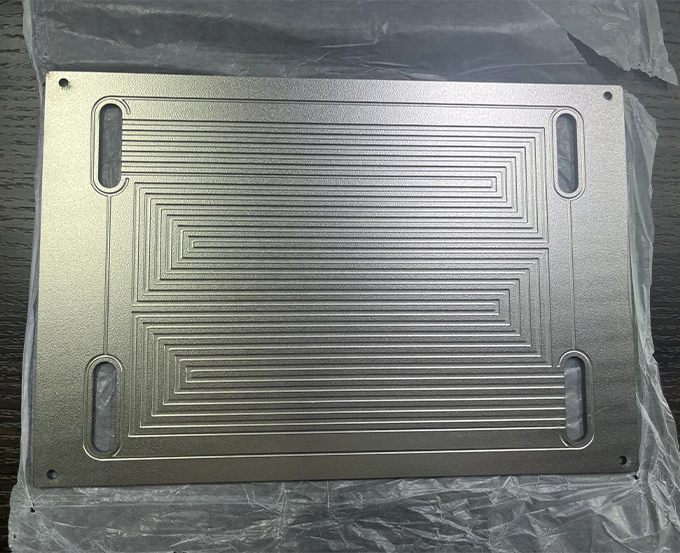Introduction:
In electrochemical devices, the design and material selection of the Electrode plate are crucial. Whether it is the Bipolar plate used in fuel cells or the Monopolar plate used in electrolyzers, they are essential components for the operation of these devices. Both Bipolar and Monopolar plates play key roles in different electrochemical environments, supporting the normal operation of equipment and enhancing efficiency. By optimizing electrical conductivity, corrosion resistance, and mechanical strength, these Electrode plates not only impact system performance but also determine the equipment’s lifespan and cost-effectiveness. In this article, TMN will explore their differences, working principles, and applications in their respective fields.
What Are Monopolar Plates and Bipolar Plates?
Monopolar Plate:
A Monopolar plate is a critical component used in electrochemical devices, primarily serving as an electrode or conductive material. Unlike Bipolar plates, the Monopolar plate participates in the electrochemical reaction on only one side and is commonly used in electrolyzers, electroplating systems, and industrial electrolysis equipment.
Working Principle of Monopolar Plate:
The core function of a Monopolar plate is to act as an electrode, introducing or extracting current from the electrolyte or reactants within the electrochemical device. During the electrolysis process, current passes through the electrolyte solution, leading to chemical reactions, with the Electrode plate serving as either the anode or cathode to facilitate charge transfer.
Anode: When the Monopolar plate serves as the anode, current flows from the Electrode plate into the electrolyte, causing an oxidation reaction.
Cathode: When the Monopolar plate serves as the cathode, current flows from the electrolyte into the Monopolar plate, causing a reduction reaction.
Applications of Monopolar Plate:
Monopolar plates are widely used in electrochemical devices requiring electrodes, with the following primary applications:
1. Electrolysis Equipment: In applications such as water electrolysis for hydrogen production, metal extraction through electrolysis, and the chlor-alkali industry, the Monopolar plate serves as an electrode to drive electrolysis reactions.
2. Electroplating Equipment: In electroplating processes, the Monopolar plate acts as the anode or cathode, reacting with the plating solution to help form a coating on the workpiece surface.
3. Industrial Electrolyzers: In the metallurgical industry, Monopolar plates are used to extract pure metals or remove impurities.
4. Chemical Production: Monopolar plates are utilized in chemical production processes, such as the electrolytic production of chlorine gas or sodium hydroxide.

Bipolar Plate
The Bipolar plate is a critical component in fuel cells and other electrochemical devices, playing a particularly vital role in Proton Exchange Membrane (PEM) fuel cells and Solid Oxide Fuel Cells (SOFCs). Its primary function is to manage both the anode and cathode reactions simultaneously within a fuel cell stack. Through the Bipolar plate, individual cells in the stack can be connected in series, generating the required voltage and power output.
Working Principle of Bipolar Plate
The Bipolar plate is designed with conductive and fluid channels on its inner and outer layers, enabling the efficient transfer of current, reactants, and products. In addition to conducting electricity, the Bipolar plate must ensure effective separation and distribution of gases and liquids, optimizing the reaction efficiency of the fuel cell. Because it serves both the anode and cathode functions, the Bipolar plate must possess high electrical conductivity, corrosion resistance, and structural strength to withstand the complex electrochemical environment.
Applications of Bipolar Plate
The Bipolar plate is primarily used in the following areas:
1. Proton Exchange Membrane Fuel Cells: In PEM fuel cells, the Bipolar plate is used to separate and connect individual cells, ensuring the efficient transfer of oxygen and hydrogen within the fuel cell stack, while also supporting the removal of reaction products.
2. Solid Oxide Fuel Cells: In these high-temperature fuel cells, the Bipolar plate must endure extreme temperatures and harsh chemical environments, making material selection and design crucial for performance and longevity.
3. Electrolyzers: In certain electrolyzer systems, the dual-sided reaction capability of the Bipolar plate makes it an ideal choice for enhancing energy conversion efficiency.
4. Energy Storage Systems: The Bipolar plate is also applied in some energy storage devices, optimizing current transmission and chemical reaction efficiency, thereby improving the overall energy utilization of the system.

Differences Between Monopolar Plates and Bipolar Plates
Key Differences
The differences between Monopolar plates and Bipolar plates primarily lie in their functions, structures, and areas of application. Below are the key distinctions:
1. Functional Differences
In electrochemical devices, the Monopolar plate only participates in a single-sided reaction, typically used in electrolyzers or electroplating systems, where it functions as either the anode or cathode. It handles the electrochemical reaction on only one side of the Electrode plate.
The Bipolar plate manages both anode and cathode reactions simultaneously. One side is connected to the anode, while the other side is connected to the cathode. In a fuel cell stack, the Bipolar plate connects multiple individual cells in series, facilitating current conduction, gas and liquid flow, and the separation of reactants and products.
2. Structural Differences
The structure of a Monopolar plate is relatively simple, usually made from a single layer of metal or conductive material. It is designed to conduct current, with only one side in contact with the reactants.
The Bipolar plate has a more complex structure, requiring consideration of multiple functions in its design. It must be conductive while also optimizing the separation and transmission of gases and liquids. Bipolar plates are typically made from corrosion-resistant materials and are designed to accommodate electrochemical reactions on both sides.
3. Areas of Application
Monopolar plates are mainly used in electrolyzers, electroplating equipment, and other electrochemical processes, such as metal extraction and the electrolytic production of chemicals. These applications generally require only one side of the Electrode plate to participate in the reaction.
Bipolar plates are widely used in fuel cell systems, such as Proton Exchange Membrane (PEM) fuel cells and Solid Oxide Fuel Cells (SOFCs), particularly in applications where multiple individual cells need to be connected in series. Bipolar plates can also be used in certain electrolyzers and energy storage systems to enhance the overall energy conversion efficiency of the system.
4. Current and Reactant Handling
The Monopolar plate handles only one side of the current and electrochemical reaction, making it simple and direct.
The Bipolar plate must simultaneously manage current and reactants on both the anode and cathode sides, ensuring effective separation and connection between the two reaction areas.

Similarities
Although Monopolar plates and Bipolar plates differ in their functions and applications, they share many similarities in terms of material selection and manufacturing processes. Below are their main commonalities:
1. Material Selection
Both Monopolar plates and Bipolar plates need to maintain excellent conductivity, corrosion resistance, and mechanical strength in electrochemical reaction environments. Common materials include:
Stainless Steel: Due to its good corrosion resistance and mechanical strength, stainless steel is a common material in electrochemical devices.
Titanium: Titanium offers excellent corrosion resistance and high strength, making it suitable for use in harsh electrochemical environments, especially in high-temperature or acidic/alkaline conditions.
Aluminum: Aluminum, with its lightweight and good conductivity, is an ideal material for Electrode plates, especially in applications where reducing the weight of the equipment is important.
Carbon-based Materials: For applications requiring lightweight and higher conductivity, carbon-based materials (such as graphite or carbon composites) are also used in the manufacture of Monopolar plates and Bipolar plates, particularly in fuel cell systems.
2. Manufacturing Processes
Monopolar plates and Bipolar plates also share many similarities in manufacturing processes, with common techniques including:
Photochemical Etching: This is a high-precision processing technique that can produce complex Electrode plate patterns, especially when precise flow channels and structural designs are required. TMN has extensive experience with this technology.
Stamping: In mass production, stamping is a commonly used manufacturing process that can quickly produce the basic shapes and structures of Monopolar plates and Bipolar plates.
Laser Cutting: For Monopolar plates and Bipolar plates that require precise edges and holes, laser cutting is an efficient and highly accurate process that can achieve complex designs.
Surface Treatment: Surface treatment is a critical step for both Monopolar plates and Bipolar plates. Common treatments include nickel plating, gold plating, and silver plating to enhance the material’s conductivity and corrosion resistance. TMN can also provide surface treatment processes, including the capability to plate one side with platinum and the other side with MMO.
Welding and Assembly: In the production of Bipolar plates, welding and assembly are essential steps to ensure the stability and conductivity of the multilayer structure. Similarly, Monopolar plates may require similar welding processes in certain applications. Like surface treatment, TMN also offers related welding and assembly services.

3. Precision Requirements
Both Monopolar plates and Bipolar plates require high precision to ensure the effective transmission of current and the transport of gases during electrochemical reactions. Therefore, controlling dimensional accuracy in the manufacturing process is crucial. TMN’s Photochemical etching technology can achieve high precision of +/-0.03mm, which is extremely important for the quality of both types of plates.
4. Quality Control
In the production process, quality control for Monopolar plates and Bipolar plates must strictly adhere to industrial standards to ensure consistent performance, durability, and reliability. Quality inspections include material analysis, electrochemical performance testing, and dimensional testing, ensuring that the final product can operate stably in electrochemical devices.
Development Trends of Monopolar Plates and Bipolar Plates
Currently, Monopolar plates and Bipolar plates remain key components in electrochemical devices, widely used in fuel cells, electrolyzers, and energy storage systems. With the advancement of renewable and clean energy technologies, the demand for efficient and durable Electrode plate materials and manufacturing processes continues to grow. The use of materials such as titanium, stainless steel, and aluminum is becoming more widespread, and high-precision manufacturing technologies like Photochemical etching are gaining increasing attention.
Looking to the future, as hydrogen energy technology develops, particularly with the promotion of fuel cell vehicles and stationary energy applications, the market demand for Bipolar plates will continue to rise. Monopolar plates will also play a vital role in the fields of water electrolysis for hydrogen production and metal extraction, alongside the progress of industrial electrolysis technology. Additionally, innovations in lightweight and highly conductive materials will further drive the technological development of these two types of Electrode plates, especially in the application of low-cost and environmentally friendly materials, where more breakthroughs are expected.
Read more:
What is the Impact of Titanium on the Manufacturing of Bipolar Plates?
The influence of bipolar plate structure on fuel cell performance
Achieving sealing grooves between bipolar plates by laser welding

